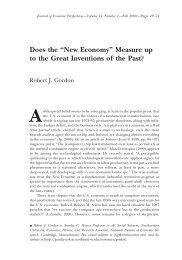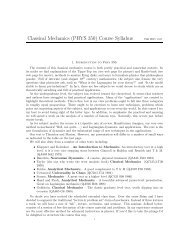Leek Scientific Classification and Etymology - Academics - Hamilton ...
Leek Scientific Classification and Etymology - Academics - Hamilton ...
Leek Scientific Classification and Etymology - Academics - Hamilton ...
Create successful ePaper yourself
Turn your PDF publications into a flip-book with our unique Google optimized e-Paper software.
(The Roman emperor Nero apparently consumed leeks on a regular basis.) Roman traders<br />
helped transport leek to much of the rest of Europe, <strong>and</strong> the vegetable became especially<br />
popular during the Middle Ages, when they were additionally believed to be an erotic<br />
stimulant that increased sperm count <strong>and</strong> stimulated desire. 105<br />
<strong>Leek</strong> is most commonly grown <strong>and</strong><br />
used in Europe, <strong>and</strong> thus most<br />
appreciated in Europe. In northern<br />
Engl<strong>and</strong>, leek growing has been <strong>and</strong><br />
continues to be a competitive<br />
business, <strong>and</strong> parents have been<br />
known to pass secrets of cultivation<br />
along to their children. 106<br />
Horticulture <strong>and</strong> Plant<br />
Specifics<br />
<strong>Leek</strong> is characterized by the<br />
formation of a pseudostem, which<br />
in some cases can exceed lengths of<br />
one meter, as well as a poorly<br />
developed bulb. Pseudostem is the<br />
term for the overlapping leaf bases of the leak, which tend to be flat <strong>and</strong> slender, <strong>and</strong> fold<br />
over each other to create a stemlike structure. Botanically, however, the edible part of the<br />
plant is not the stem, but rather the elongated leaf bases. 107<br />
The modern leek is not known in the wild—though a separate species does exist in the<br />
Allium genus called “wild leek.”<br />
Interestingly, leek bears a striking<br />
resemblance to wild A.<br />
ampeloprasum, not only in flowers<br />
<strong>and</strong> foliage, but also in clove<br />
production. Like its wild relative,<br />
leek frequently produces a small<br />
number of large cloves <strong>and</strong> small<br />
exterior cloves. These cloves serve as<br />
defining features of A.<br />
ampeloprasum. 108<br />
Cultivation<br />
“<strong>Leek</strong>s” (http://www.flickr.com/photos/calliope/<br />
54833240/).<br />
<strong>Leek</strong> is a relatively hardy species<br />
Wild leeks in upstate New York (David Gapp).<br />
that, unlike onion (<strong>and</strong> to a lesser<br />
extent garlic), does not have specific photoperiodic requirements for pseudostem<br />
formation. (Photoperiodic response refers to the amount of time the pseudostem must be<br />
15






